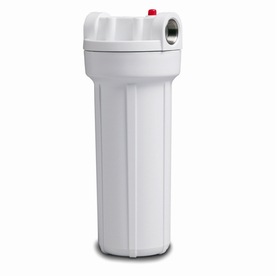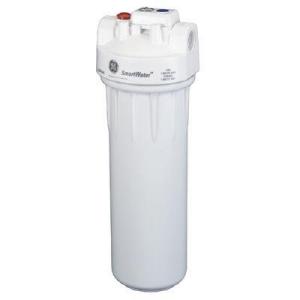Last year Baltimore started adding chloramine to the water. I followed the advise of some people on MFK that were using a two stage carbon block from The Filter Guys. I bought standard 10" housings (3) at home depot and the carbon blocks and 1 micron filter from here:
http://www.thefilterguys.biz/chloramine_filters.htm
$34.00 - CARBON BLOCK CHLORAMINE PACKAGE
- 1 POLY SEDIMENT 1 MICRON FILTER
- 1 CHLORAMINE MASTER NH2CL STAGE 2 CARBON BLOCK
- 1 CHLORAMINE MASTER NH2CL STAGE 3 CARBON BLOCK
At first I didn't add the 1 micron filter and the carbon clogged very quickly - The pressure drop to a point that it stopped the drip on 2/3's of my tanks. I've had no pressure lose issues since adding the micron filter. This was probably the issue I was having with drip emitters clogging. I may try them again now. The 1 micron filter is only $3 from filterguys so I stocked up, so far it's been 4 weeks and the flow is still strong. The carbon blocks last consideribly longer then GAC.
* there is one draw back and that's the carbon reduces the chloramine to ammonia, so you have to have strong bio filtration since you are essentailly creating an ammonia drip. My planted tank is kicking as are the pothos hanging off the the rest of my tanks (noticable difference in pothos growth/health since adding these carbon blocks).







